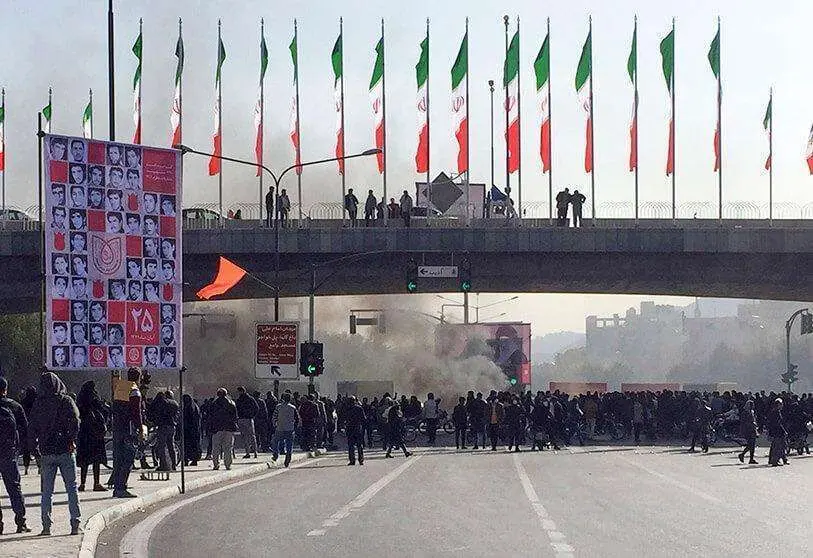Iran closes border with Pakistan as riots spread across 31 Iranian cities

The last few weeks in Iran have been chaotic. The riots have become a constant throughout the country and the repression by the authorities has been devastating. This time, the instability has reached Zahedan, a city in southeastern Iran near the border with Pakistan, leading to the closure of Tehran's border with its Pakistani neighbour. Sistan and Baluchistan has witnessed the outbreak of a new episode of violence sparked by a demonstration at the Makki mosque over the rape of a 15-year-old girl allegedly by a local military commander.
However, this protest was not the only trigger, as the struggle for the independence of the two cities is also one of the sources of instability. This is demonstrated by the assassination of Ali Mousavi, provincial intelligence chief of the Islamic Revolutionary Guard Corps, who was shot during the riots and died hours later in hospital. The assassination has been claimed by Jaish Al-Adl, a militant jihadist group based in southern Iran. They claim to be fighting for the independence of Sistan and Baluchistan and the defence of the Baluchis, the majority ethnic group in the region.
The problem stemming from this escalation of violence is explained by an official of Pakistan's Federal Investigation Agency, who told Arab News on condition of anonymity that "they are not allowing movement out of Pakistan to Iran". He added that 'on Saturday they allowed 780 people to cross (...), but on Sunday they completely stopped all trade and pedestrian movement'. Local sources believe that the latest developments in Zahedan, the capital of Sistan and Baluchestan province, were caused by "brutality towards the people of Zahedan by Iranian forces".

The decision to close the border with Pakistan may not be entirely positive for Tehran. At least that is the view of Sardarzada Umair Muhammad Hassani, a former adviser to the Prime Minister of Balochistan. Hassani believes that the closure of the crossing between the two countries will have serious consequences for Iran, as much of the food supply to Iranian territory passes through Pakistan. He also said he would retract his stated view of a possible rapprochement between Islamabad and Tehran. He claims that the killings in Zahedan make any appeasement impossible by blaming Iranian forces for the bloody violence in the region.
The death toll during the protests has risen to 50. The Sistan and Balochistan administration had initially put the death toll at 19, but the inability to treat the injured in hospitals for fear of arrest by the Iranians has led to them being treated at home, raising the figure to around 50. The Baloch Activists Campaign claims that the number of wounded has reached 270 and that most of them have been shot by Iranian forces. Throughout the weekend, the Iranian provincial capital was cut off until late Sunday, although internet access has not yet been re-established.

It is important to bear in mind that the demonstrations throughout the country were triggered by the death of 22-year-old Mahsa Amini while in the custody of the Iranian police. Despite this, the Iranian government and its allies downplay the importance of this event, which, they claim, has not been sufficiently clarified. Hassan Nasrala, leader of Hezbollah, the most powerful terrorist group in the eastern Mediterranean along with Hamas, assures that "the death of an Iranian woman in a situation that is not clear has been exploited by the West to get involved", and assures that "Iran is too strong to be shaken by this type of event".

The protests against the government of Ebrahim Raisi - considered the most significant in the last decade - have spread to 31 provinces across the country and have had various consequences, including the closure of Sharif University in Tehran. The deaths in Zahedan add to those caused by the crackdown on previous demonstrations, bringing the total number of deaths in Iran at the hands of the authorities since the protests began in mid-September to over 100.








